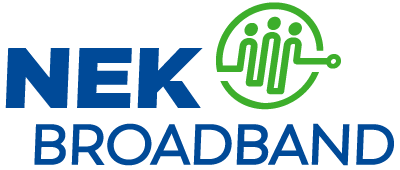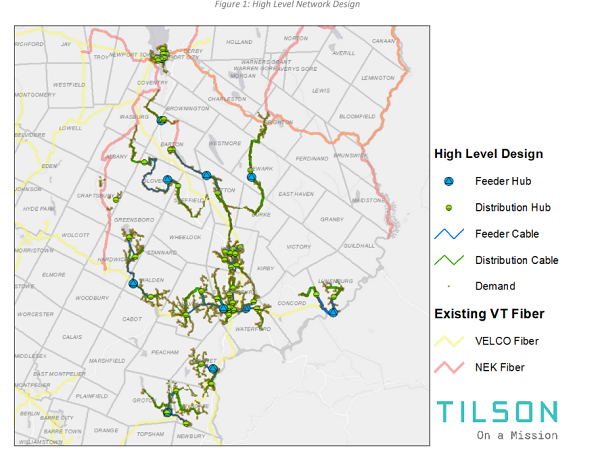
Fast, affordable Internet access for all.

The United States Department of Agriculture (USDA) has awarded a $17.5 million grant to NEK Community Broadband (NEK Broadband), providing another shot in the arm for Vermont’s fast-growing collection of Communications Union Districts (CUDs). Such CUDs continue to play a starring role in Vermont’s efforts to finally conquer the digital divide.
NEK Broadband’s latest grant comes from the USDA’s ReConnect Loan & Grant Program, which helps defray the costs of network hardware and broadband deployment to rural and traditionally underserved U.S. markets.
The program this week doled out an additional $714 million in grants and loans to projects across 19 states.
NEK Broadband officials say its $17.5 million award will be combined with a $5.8 million investment to deliver affordable fiber access to 3,295 homes, 94 businesses, 183 farms and 11 educational facilities across 22 towns in Orleans, Caledonia, and Essex counties in Vermont.

“For too long, large pockets of our state have been denied this critical resource because companies haven’t found it profitable enough to invest,” Vermont Senator Bernie Sanders said in an announcement of NEK’s latest grant. “This federal funding is transformative, because the money is going directly to the very communities who will benefit, instead of having to go through those who care more about profits than delivering service.”
The award comes on the heels of another $16 million grant by the Vermont Community Broadband Board (VCBB) to expand fiber access to 10 other underserved and unserved Vermont communities.
Christa Shute, executive director of NEK Broadband, recently testified before a subcommittee of the U.S. Senate Committee on Agriculture, Nutrition and Forestry, noting that the new $17.5 million USDA grant would fund the majority of a $23.5 million project in the Northeast Kingdom, a 2,000 square mile stretch of scenic rural Vermont wilderness.
All told, Shute stated that the grants will help NEK Broadband deploy 321 miles of fiber optic cable across 22 of the most rural and underserved towns in the Northeast Kingdom, many of which have been neglected for decades by the state’s entrenched regional telecom monopolies.
NEK Broadband currently offers its residential customers symmetrical 50 Mbps (Megabits per second) fiber connections for $80 per month, or symmetrical 250 Mbps connections for $103 per month. Users also have the option of business-class tiers providing symmetrical 500 Mbps service for $135 a month, or symmetrical gigabit lines for $250 a month.

While not in line with the kind of pricing (often symmetrical gigabit for $70) seen in more urban, competitive markets, it remains revelatory for traditionally underserved Vermont residents long stuck on aging and expensive DSL, costly and usage capped satellite–or nothing at all.
ReConnect Program Faces Uncertain Future
The USDA’s ReConnect program recently received a $2 billion boost from the Infrastructure Investment and Jobs Act (IIJA), and another $400 million infusion in the latest budget. Still, USDA officials state that demand routinely outpaces available funding, and while renewing the program is popular, how exactly to do so remains a point of contention.
The Reconnecting Rural America Act, recently introduced by Senators Roger Marshall (R-KS) and Peter Welch (D-VT), which would extend program funding, mandate a 100 Mbps symmetrical deployment standard, and further clarify that the USDA can make grants, loans, and grant-loan combinations, particularly to CUDs.
“Rural communities across the country—whether in my home state of Vermont or Sen. Marshall’s beloved Kansas—have been left behind as our economy has become increasingly digital and better connected,” Welch said of the bill. “That’s unacceptable. Support from ReConnect can change that and help our communities close the digital divide.”
At the same time, The Rural Internet Improvement Act, introduced by Senators John Thune (R-SD) and Ray Lujan (D-NM) eyes renewing the program but with a sharper focus on preventing funding from going toward competitors to major regional monopolies. Unsurprisingly, major cable companies like Comcast support this approach to program renewal.
CUDs The Backbone Of Vermont’s Quest For Affordable Access
Vermont is currently in the process of shoring up historically inaccurate broadband access maps, then using that updated data to inform distribution of billions in grants, whether that’s from the American Rescue Plan Act, or looming Broadband Equity, Access, and Deployment (BEAD) grants made possible by the IIJA.
Vermont leaders have embraced CUDs as the primary method of shoring up broadband access gaps, having already driven $150 million in grants toward CUDs in a state where 85 percent of municipalities and 90 percent of underserved locations fall within a CUD.
NEK Broadband represents 45 Vermont communities across Caledonia, Essex, Orleans and Lamoille Counties, in the northeast part of the state. And while NEK Broadband was the first CUD in the state to receive funding under Vermont’s Act 71 Broadband Construction Grant program, and the first ever to receive a USDA ReConnect grant, it’s certainly not alone.
NEK Broadband and CVFiber are among the 10 Vermont CUDs all simultaneously pushing affordable broadband into hard to reach parts of the state. The movement technically began with ECFiber, a CUD that in 2008 began as a more loosely organized coalition of 24 towns that would go on to become a pioneer in the space.
ECFiber created the East Central Vermont Telecommunications District after 2015 legislation legalized CUDs in Vermont, providing them the legal right to issue revenue bonds to fund broadband deployment. Unlike general obligation bonds, revenue bonds don’t create liability for taxpayers should a project fail, and can often fund entire projects without the need for the CUD to contribute any additional cash or equity.
“Regional utility districts can make service delivery more financially feasible and efficient by bundling geographically dispersed customers into a single large network,” Kathryn de Wit, Director of the Pew Broadband Access Initiative, told ILSR.
“The economic benefits also extend to taxpayers,” De Wit added. “Publicly-owned regional utility districts have a longer return-on-investment timeline than for-profit companies, but the risk and cost of owning broadband infrastructure are shared with the private ISPs that maintain and operate the networks.”
According to the Vermont Department of Public Service, only 29 percent of Vermont residents can obtain broadband at symmetrical speeds of 100 Mbps. Four percent of state residents have no access to any broadband whatsoever, and sixteen percent of state residents can only obtain speeds of 4 Megabits per second downstream, 1 Mbps upstream.
As in many U.S. markets, affordability also remains a significant barrier to widespread broadband adoption, with 68 percent of Vermont households earning less than $25,000 per year having access to only the FCC’s increasingly dated broadband definition of 25 Mbps downstream, 3 Mbps upstream.
For long underserved Vermont communities, CUDs are providing an essential lifeline to essential medical, employment, and educational opportunities, and are increasingly providing inspiration for other states equally frustrated by the seemingly intractable digital divide.
